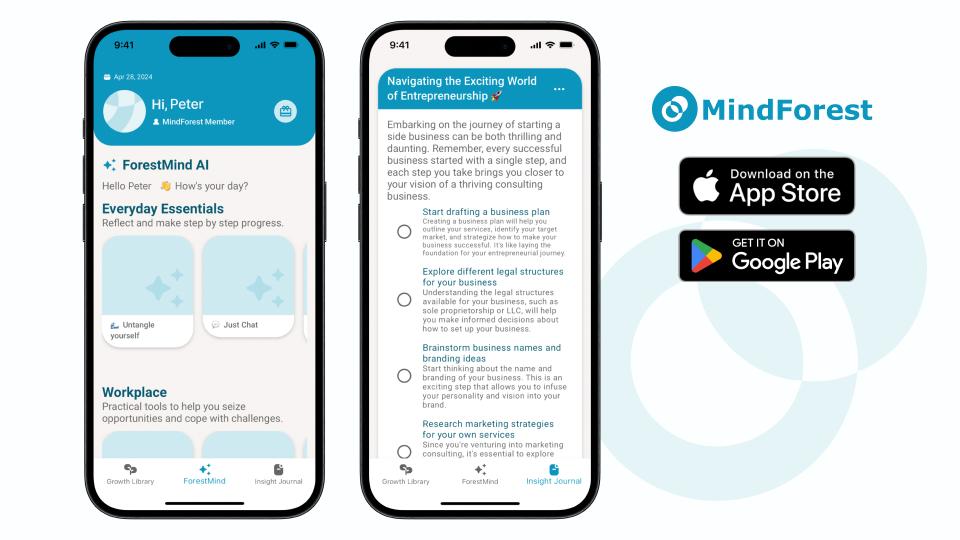
Ghosting and Avoidant Behaviour: Why We Pull Away and 3 Ways to Heal from It
Have you ever experienced ghosting? The two of you were chatting happily the night before, and the next day the person suddenly disappears, never replying again?
Have you ever been affected by the sunk cost fallacy, where you don’t want to give up an opportunity even when it no longer benefits you? Read this article to learn more about the sunk cost fallacy.

Have you ever been affected by the sunk cost fallacy, where you don’t want to give up an opportunity even when it no longer benefits you? If you’re an investor, you may resonate with the story below:
John invested $10,000 in a new startup, convinced it would yield high returns. After a year, the startup showed no signs of profitability, and experts advised cutting losses. However, John hesitated, thinking about the money already invested. He continued to pour more funds into the struggling business, hoping it would turn around. Despite mounting evidence that the startup would fail, John’s inability to give up his initial investment led him to lose even more money. This is a classic example of the sunk cost fallacy, where John’s decision to keep investing was influenced not by future potential but by his desire to justify past expenditures.
To avoid similar situations happening in your life, read this article to learn more about the sunk cost fallacy.
Sunk cost is a cognitive bias in economics and business that refers to "costs that have already been incurred and cannot be recovered."
I first learned about this concept in the book The Art of Thinking. The theory advises us not to cling to the past. The book gives an example: imagine you’re watching a terrible movie, and you want to leave halfway through. However, your wife says, "We spent 30 euros on these tickets; leaving now would be such a waste." As a result, you end up wasting both money and time watching the movie.
It’s quite easy to spot the decline. Just look out for phrases like "It's not worth it," "Such a waste," or "Quit now?" In the modern world, where employees often exchange time for money, the equation "time = money" still holds true.
Here are some daily-life examples of sunk cost fallacy:
Examples go even further, such as in the movie The Fog of War, where it's mentioned that the U.S. continued fighting in the Vietnam War despite knowing they were losing, simply because they had already sacrificed so many young lives and didn’t want to give up and lose face.
The MBA Think Tank suggests the following reasons:
1. Initial Investment: The amount of time and money invested at the start. The higher the initial investment, the harder it is to give up and withdraw.
2. Situational Factors: The decision-maker’s sense of responsibility when things don’t go as planned. The more responsibility they feel, the higher the chance of falling into the sunk cost fallacy. However, this relationship is still debated among psychologists.
3. Mental Accounting: A mechanism that helps people give up and withdraw from a situation before it becomes irretrievable.
As mentioned earlier, mental accounting is a self-control measure, a "Plan B in decision-making." For example, an ambitious young entrepreneur with limited time and funds must set deadlines and financial budgets for themselves. They might set goals like reaching a certain number of customers within a year or earning a specific monthly profit. If they don’t achieve the expected results within these limits, they should consider changing strategies or quitting. Whether it’s a career, hobby, or relationship, setting deadlines and having a Plan B is always a smart move, helping you to give up when necessary.
Set a deadline for yourself. If your efforts don’t pay off within that time, decisively part ways with the task or person. Treat your time kindly, and don’t be afraid to give up for the sake of better opportunities.
Quoting the book’s author, Rolf Dobelli (2013):
"Continuing to invest in something to complete it can be based on many good reasons, but never on this one: that you have already invested a lot of time in it."
When faced with choices, our attitudes change with experience, knowledge and wisdom. Sometimes, "today’s me defeating yesterday’s me" is not shameful. It means you’re pulling yourself out of the swamp of sunk costs and returning to solid ground to decide how to move forward into the unknown, ready to give up when needed.
In today’s fast-paced business environment, knowing when to give up on unproductive ventures and avoid the sunk cost fallacy is key to success. MindForest is your digital partner in honing these critical skills. Discover how MindForest can transform your approach to decision-making and help you avoid the sunk cost fallacy:
1) AI-Driven Scenario Analysis: Engage with an AI coach that not only supports you emotionally but also challenges your decision-making processes. These simulations provide practical experience in making tough decisions, teaching you when to hold on and when to give up under various business conditions.
2) Insight Journal for Continuous Improvement: By analysing your thoughts, MindForest generates detailed feedback. This encourages deep reflection on your decision-making patterns, helping you identify when you’re falling into the sunk cost fallacy and prompting you to consider giving up unproductive pursuits.
3) Goal Setting and Progress Tracking: MindForest helps you set clear goals and track your progress. If you find that your efforts are not yielding the desired results within a set timeframe, the app will prompt you to reassess your strategy and consider giving up on unproductive tasks.

Download MindForest today to empower your journey in mastering decision-making, essential tools for navigating the complexities of sunk cost fallacy and knowing when to give up for better opportunities.
References
Dobelli, R. (2013)The Art of Thinking Clearly. Harper.
Discover practical psychology tips you can apply to your everyday life. From building resilience to improving relationships and finding work-life balance, our blog brings expert-backed insights that help you grow.

Have you ever experienced ghosting? The two of you were chatting happily the night before, and the next day the person suddenly disappears, never replying again?

This article breaks down the psychology of nonchalance, signs of a nonchalant dater, the debate nonchalant vs chalant, and what truly matters when forming modern relationships.

Have you ever felt so intensely drawn to someone that you couldn’t stop thinking about them—imagining every possible interaction, decoding every message, overanalysing every glance? If so, you may not be experiencing love, but something more specific: limerence.
Download MindForest and turn these insights into action. Get personalized support from ForestMind AI Coach, track your progress, and unlock your full potential.